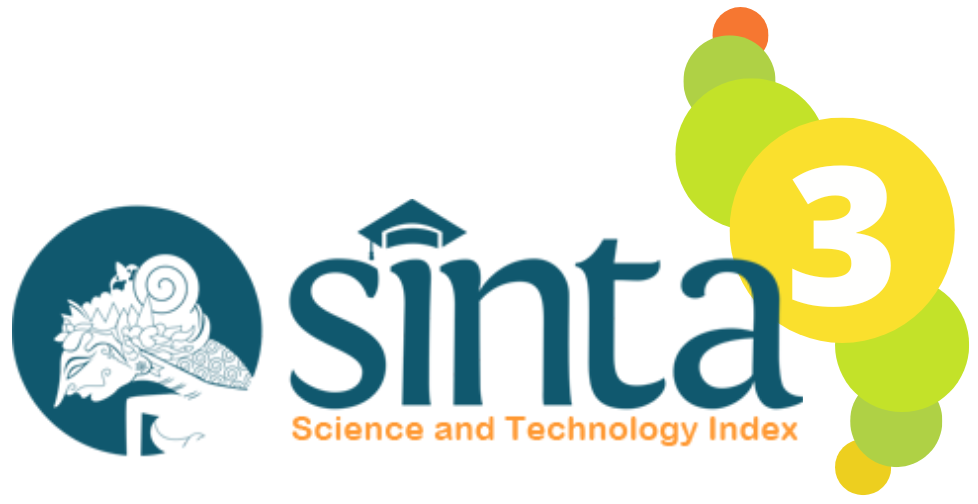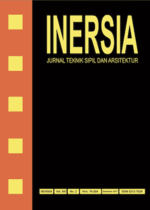ANALISIS REGANGAN BAJA TULANGAN PADA STRUKTUR PILE CAP EMPAT TIANG METODE STRUT AND TIE MODEL
DOI:
https://doi.org/10.21831/inersia.v15i2.28624Keywords:
pile cap, four piles, Strut and Tie Model (STM)Abstract
ABSTRACTPile cap is one of the many types of structures that are entirely Disturbed-region. The structure undergoes a non-linear strain because it was meeting point of the pile and column with centralized forces. In addition, geometry changes occur at the meeting between the column, pile cap, and pile, so the Bernoulli concept is no longer suitable for this condition. Pile cap testing consists of two groups of specimens and each group consists of three specimens. The first group was designed using the STM method (SNI 2847: 2013 Appendix A) and the second group was designed using conventional methods (SNI 2847: 2013 Article 15). Loading is the application of a centralized static load that is channeled through a centric column until the pile cap structure has collapsed. The results show that: (1) The flexural reinforcement which experiences the first yield condition both on the pile cap testing of the STM method and in the conventional method was the X direction flexural reinforcement (outsidest flexural reinforcement). (2) The average strain of the yield conditions and load on the pile cap STM method were 2242 με and 528.97 kN, whereas the conventional method were 2436 με and 437.03 kN. (3) Increasing the load capacity of the yield conditions (Py) of the pile cap STM method and conventional method on the plan load (Pn) were 32.2% and 9.3%.
Keywords: pile cap, four piles, Strut and Tie Model (STM)
ABSTRAK
Pile cap merupakan salah satu dari jenis struktur yang sepenuhnya merupakan daerah terganggu (Disturbed-region). Struktur tersebut mengalami regangan non-linear karena merupakan titik pertemuan pile dan kolom dengan gaya-gaya terpusat. Selain itu, terjadi perubahan geometri pada pertemuan antara kolom, pile cap, dan pile, sehingga konsep Bernoulli tidak cocok lagi pada kondisi tersebut. Pengujian pile cap terdiri dari dua kelompok benda uji dan masing-masing kelompok terdiri dari tiga buah benda uji. Kelompok pertama dirancang menggunakan metode STM (SNI 2847:2013 Lampiran A) dan kelompok kedua dirancang menggunakan metode konvensional (SNI 2847:2013 Pasal 15). Pembebanan berupa penerapan beban statik terpusat yang disalurkan melalui kolom sentris sampai struktur pile cap mengalami keruntuhan. Hasil menunjukkan bahwa: (1) Tulangan lentur yang mengalami kondisi leleh terlebih dahulu baik pada pengujian benda uji pile cap metode STM maupun pada metode konvensional adalah tulangan lentur arah X (tulangan lentur terluar). (2) Rata-rata regangan kondisi leleh dan beban pada benda uji pile cap metode STM adalah 2242 με dan 528,97 kN, sedangkan pada metode konvensional adalah 2436 με dan 437,03 kN . (3) Peningkatan kapasitas beban kondisi leleh (Py) pada benda uji pile cap metode STM dan metode konvensional terhadap beban rencana (Pn) adalah 32,2 % dan 9,3 %.
Kata kunci: pile cap, empat tiang, Strut-and-Tie Model (STM)Downloads
Published
How to Cite
Issue
Section
License
Authors who publish with INERSIA journal agree to the following terms:
- Authors retain copyright and grant the INERSIA journal right of first publication with the work simultaneously licensed under Creative Commons Attribution License (CC BY 4.0) that allows others to share the work with an acknowledgment of the work's authorship and initial publication in this journal.
- Authors can enter into separate, additional contractual arrangements for the non-exclusive distribution of the published version of the work (e.g., post it to an institutional repository or edit it in a book), with an acknowledgment of its initial publication in this journal.
- Authors are permitted and encouraged to post their work online (e.g., in institutional repositories or on their website) before and during the submission process, as it can lead to productive exchanges, as well as earlier and greater citation of published work.

INERSIA by https://journal.uny.ac.id/index.php/inersia was distributed under a Creative Commons Attribution 4.0 International License










